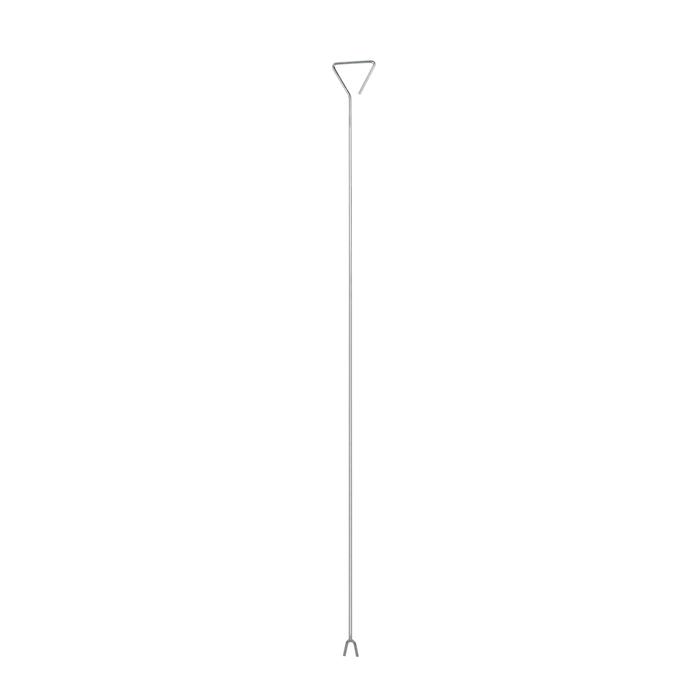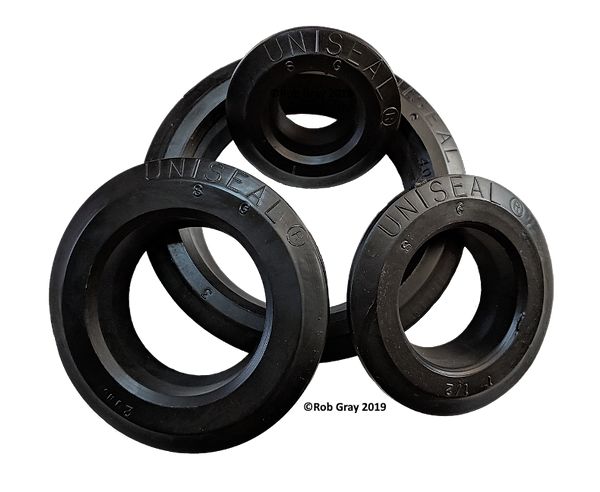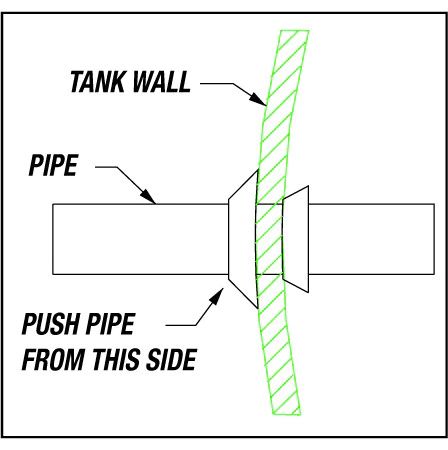
 8
8




Kimi BrownKawa
https://www.brownkawa.com
 9
9




 14
14




My farm and garden: https://trello.com/b/GqBLwdNh
My tacky designs on merch: https://www.redbubble.com/people/oldmobie/shop?asc=u&ref=account-nav-dropdown

Ball Valve

Street Key

Uniseals

Uniseal installation
 8
8




We had one of these when we lived in Ottawa. Some municipal workers hooked up our hose to it one day when we were out. The hose effectively defeated the mechanism and burst the pipe inside the house. We were away at the time... So just don't leave anything attached to the outside spigot part! If you want to be able to have a hose attached to it, use a quick connect so it's easy to remove as soon as you finish with it. The hose will be fairly low pressure anyway, but depending on the situation and uses for the water, even a low pressure hose has benefits of both relocating the water and decreasing the tendency for it to splash or drip in places you don't want it to do so.Kimi Iszikala wrote:Can you install a silcock (frost-free hose bib) on a rain barrel? I assume if the water doesn't freeze around the backside of silcock that would work? (And assuming the rain barrel has a removable top so we can access the backside for installing)
Visit Redhawk's soil series: https://permies.com/wiki/redhawk-soil
How permies.com works: https://permies.com/wiki/34193/permies-works-links-threads
 1
1




Jay Angler wrote: We had one of these when we lived in Ottawa. Some municipal workers hooked up our hose to it one day when we were out. The hose effectively defeated the mechanism and burst the pipe inside the house. .
Kimi BrownKawa
https://www.brownkawa.com
 7
7




Jay Angler wrote: We had one of these when we lived in Ottawa. Some municipal workers hooked up our hose to it one day when we were out. The hose effectively defeated the mechanism and burst the pipe inside the house. We were away at the time... So just don't leave anything attached to the outside spigot part!

 3
3




How Permies works: https://permies.com/wiki/34193/permies-works-links-threads
My projects on Skye: The tree field, Growing and landracing, perennial polycultures, "Don't dream it - be it! "
 7
7




Nancy Reading wrote:I like T Melville's solution of a tap inside the barrel so that the thermal mass of the water makes it less likely to freeze. In mild UK having a tap (=cock?**) on a water butt (=rainbarrel) is quite normal. To be extra safe you could have a cap that fits over or into the exposed bit of pipe, so that cold air does not penetrate into the pipe and still freeze it from the inside.
**I had to look up sillcock/hose bib as I had never heard of it - It would just be an 'outside tap' in the UK.
![Filename: Freeze-Proof-Hose-Bib.jpg
Description: [Thumbnail for Freeze-Proof-Hose-Bib.jpg]](/t/230554/a/223930/Freeze-Proof-Hose-Bib.jpg)
My farm and garden: https://trello.com/b/GqBLwdNh
My tacky designs on merch: https://www.redbubble.com/people/oldmobie/shop?asc=u&ref=account-nav-dropdown
 2
2




T Melville wrote:In your situation, since you'd like 2", I think I'd use a PVC ball valve installed well inside the tank.
Kimi BrownKawa
https://www.brownkawa.com
 8
8




Visit Redhawk's soil series: https://permies.com/wiki/redhawk-soil
How permies.com works: https://permies.com/wiki/34193/permies-works-links-threads




John Daley Bendigo, Australia The Enemy of progress is the hope of a perfect plan
Benefits of rainfall collection https://permies.com/t/88043/benefits-rainfall-collection
GOOD DEBT/ BAD DEBT https://permies.com/t/179218/mortgages-good-debt-bad-debt




John Daley Bendigo, Australia The Enemy of progress is the hope of a perfect plan
Benefits of rainfall collection https://permies.com/t/88043/benefits-rainfall-collection
GOOD DEBT/ BAD DEBT https://permies.com/t/179218/mortgages-good-debt-bad-debt
 5
5




T Melville wrote:I'm on my celphone right now, so I'll try to post some pics when I'm back at my PC. In your situation, since you'd like 2", I think I'd use a PVC ball valve installed well inside the tank. I'd have a welder or machine shop make me a custom street key so I could open and close the valve. (I'd install the street key through the tank's lid, working the valve with the handle sticking out above.) Then I'd run PVC through a uniseal to seal between it and the tank. I'd try to run the pipe very slightly downhill, so when you shut the valve the pipe drains out. A 45° elbow JUST outside the tank might help start a little siphon to empty the pipe.
Nails are sold by the pound, that makes sense.
Soluna Garden Farm -- Flower CSA -- plants, and cut flowers at our farm.
 7
7




If you're referring to the farm "hydrant", yes they're not super common, but farms with animals to water are often willing to pay the price as the convenience and piece of mind is totally worth it. They last decades (ours is over 30 years old) so if you amortize the cost and value in the labor saved from having to drain systems and the stress of worrying about pipes freezing, I think they're totally worth it. The last time we had a really cold, snowy winter that seemed to go on for months, there were a lot of locals who were agreeing with me!John C Daley wrote:This is an interesting topic, the last concept is clever, but they seem to be rarely used. Is that the case?
Visit Redhawk's soil series: https://permies.com/wiki/redhawk-soil
How permies.com works: https://permies.com/wiki/34193/permies-works-links-threads
 2
2




 4
4




Well, maybe I just got a dud, but I found that our jiggler was only effective if the barrel was over half full. Two issues: one was water pressure, the second was that if your filtration isn't great, trying to get the jiggler started tended to stir up the gunk in the water and the less water, the more gunk/volume.Douglas Alpenstock wrote:Why not use a jiggler siphon attached to a 3/4" garden hose? Move the water you need, gravity powered, then bring it inside for the night.
Visit Redhawk's soil series: https://permies.com/wiki/redhawk-soil
How permies.com works: https://permies.com/wiki/34193/permies-works-links-threads
 1
1




Jay Angler wrote:... if your filtration isn't great, trying to get the jiggler started tended to stir up the gunk in the water and the less water, the more gunk/volume.

|
Time is the best teacher, but unfortunately, it kills all of its students - Robin Williams. tiny ad:
The new kickstarter is now live!
https://www.kickstarter.com/projects/paulwheaton/garden-cards
|



